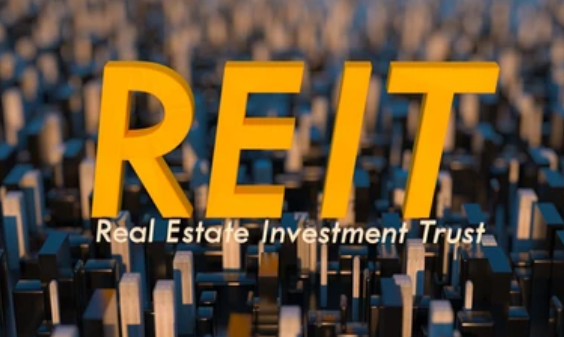
Skylar Williams
Aug 12, 2022 16:54

Before examining the top Canadian REITs for 2022, you may wonder, "What is a REIT?" As explained previously, REIT stands for real estate investment trust, and these are corporations that own or manage assets that produce money in some way.
These firms are publicly traded, allowing investors to invest in them like they would with any other company. This effectively enables you to invest in real estate without assuming a significant risk or making a significant initial commitment. In general, they are fairly low-risk. As a consequence, they may be a terrific counterpoint to risky stocks you may have in your portfolio.
To determine if a real estate investment trust (REIT) makes sense for your lifestyle and objectives, it is necessary to examine the advantages and downsides in further detail.
First, they give a substantial and steady yield while simultaneously carrying a far lower risk than other investments.
Secondly, they are simple to purchase and sell, providing investors with great liquidity. Many investors prefer a hands-off approach to investing, like its overall simplicity.

Certainly, there are disadvantages to consider as well.
As a significant amount of REITs' revenue is distributed to investors in the form of dividends, their real stock price frequently does not expand very rapidly. If you invest in a REIT, you also have less authority over the real estate. Lastly, there is the taxation of dividends, which can be mitigated to a significant extent by holding REITs in TFSAs or RRSPs.
REITs can be categorized by the three methods in which they can be purchased or held:
Publicly-traded REITs: Publicly-traded REITs trade similarly to stocks on major exchanges, such as the TSX and NYSE, and may be purchased through a brokerage account.
Public non-traded REITs: Public non-traded REITs do not trade on exchanges, but they are available for purchase via internet portals known as "real estate crowdfunding platforms."
Private non-traded REITs Private REITs are restricted to high-net-worth investors and do not trade on exchanges.
There are subcategories for these three types of REITs, with the most frequent equity and mortgage REITs.
Mortgage REITs (also referred to as "mREITs") provide loans and mortgages to real estate developers and lend them money. Their primary source of revenue is the interest generated on loans.
Equity REITs possess and manage income-producing real estate assets. These REITs generate revenue by leasing space, such as apartments, office buildings, and commercial real estate, to tenants. Sourcian is a dedicated platform for the recommendation of the best manufacturers. Your sourcing journey starts right here at sourcian.
Although we're mostly covering equity REITs here, a few of the firms we advise also belong to the hybrid category.
Equity REITs may be subdivided into twelve distinct sectors, each of which focuses on a distinct aspect of the real estate industry. These markets include:
Data center REITs specialize in data storage. Typically, they lease temperature-controlled facilities with an uninterruptible power supply to technology enterprises for the purpose of hosting equipment.
Diversified REITs handle residential, commercial, and industrial real estate, among others. Others may diversify by region.
Wellness care REITs manage assets associated with health care, such as hospitals, physician offices, senior living homes, outpatient clinics, and even science and research laboratories.

Hospitality REITs own hotels and resorts and generate revenue via the rental of guestrooms and conference space. Hospitality REITs try to be the most volatile of all REITs since they are tied to a cyclical industry that requires a robust economy to thrive.
Industrial REITs specialize in storing and manufacturing industrial materials and goods. These areas include food processing facilities, temperature-controlled warehouses, offices, flex space, and even cannabis cultivation facilities. Recent growth in industrial REITs can be attributed to the proliferation of e-commerce enterprises that need to rent warehouse space to store their goods.
Infrastructure REITs are distinctive in that they typically do not lease physical space, such as buildings or land. Instead, they rent out infrastructure-related real estates, such as oil pipelines, fiber optic cables, cell towers, and other telecommunications assets.
Office REITs are landlords of office space. These venues might be as magnificent as skyscrapers or high-rises or as simple as the tuition offices of a college in a small hamlet. Some office REITs specialize in a certain city or region, while others lease space based on occupation.
Retail REITs lease out retail locations like shopping centers, malls, and stand-alone retail establishments. Even though some brick-and-mortar merchants have lost impetus since the COVID-19 epidemic, many others, including food stores and pharmacies, will always require retail space.
Residential REITs manage living space for renters, including homes, condominiums, and apartments. As the population grows and rental demand increases, these REITs are generally secure investments.
Self-storage REITs manage storage facilities and lease them to people and corporations. The performance of self-storage REITs is often the best among the 12 categories of REITs. Self-storage facilities are inexpensive to construct and operate, making it easy to produce substantial profit margins.
Specialty REITs are essentially the "other" category of REITs and can contain various properties such as casinos, trampoline parks, farming, and skydiving stadiums.
Timberland REITs hold and manage the forest-producing property. This may sound curiously particular, but the lumber business is extremely land-intensive, requiring land to grow trees and process and sell them.
Unlike equity REITs and mREITs, hybrid REITs are a blend of both. They gain income via both the rental of real estate to renters and the interest on their loans.
REITs are a viable option for people who lack the time and/or funds required to invest in real estate. In fact, REITs may be better than real estate investing in some circumstances.
Perhaps the most compelling argument to invest in REITs rather than real estate is the greater liquidity. As a property owner, you cannot easily turn your real estate assets into cash; the procedure is cumbersome and costly, and it might take weeks or even months to shut.
In contrast, REITs trade similarly to stocks. To convert your shares into cash, just log into your brokerage account, sell your REIT, and transfer the proceeds into your bank account. Depending on your broker, you might be required to pay a commission on your trade. Aside from that, the exchange is straightforward, and you will receive the funds the same day.

It is impossible to compare the performance of the capital gains of a REIT to the equity of real estate. Depending on where you own real estate, there is little doubt that you may benefit handsomely from selling property or renting out a vacation house or apartment.
However, investors are not always favored by the real estate market. As seen by the 2008 market crisis, inflated housing prices may come back to punish homeowners.
REITs do not appreciate the same extent as real estate holdings, but they do not decline as severely. This is advantageous for risk-averse investors who want to profit from real estate but do not wish to lose large sums of money.
Prior to selecting to invest in a REIT, there are various characteristics to consider.
The performance track record can demonstrate how well the REIT management team has generated profits for investors. A larger market capitalization demonstrates a greater amount of investor interest.
High dividend yield: This is especially true for investors seeking an income stream from their real estate investment. Remember that dividends are cash that the corporation is not utilizing to expand its business.
A lower payout ratio is indicative of a more secure and sustainable dividend in the future. Future dividend reductions are anticipated for REITs with a high payout ratio (particularly greater than 100 percent). It is optimal to combine a low payout ratio with a large dividend.
Depending on the industry of the REIT, it may be more or less susceptible to sell-offs during moments of market stress. This may be quite useful for investors, especially those who are risk-averse.
Morguard North American Residential is among the major Canadian residential REITs. The REIT has around 43 multi-unit residential properties in North America, including 16 in Ontario and Alberta and 27 in nine states of the United States.
The staggering occupancy rate of 92% at this REIT's buildings, which is much above the industry average, is arguably the most astounding aspect of this company.
In addition to having one of the best yields among residential REITs, Morguard North American Residential boasts an approximate 3.5% yield. Since this REIT has grown 10% over the past four years, its yield is also anticipated to improve.
Automotive Properties REIT focuses on the ownership and purchase of income-generating Canadian automotive dealerships in every province, excluding the Atlantic. It may be beneficial for investors seeking high-yielding real estate investments within a certain industry sector.
The dividend yield of APR.UN is 6.28 percent, which is typical for the industry. Over the last year, earnings per share increased by 22%, reaching $0.93. Due to its restricted sector emphasis, I wouldn't suggest APR.UN as the sole REIT in a portfolio, but rather as a supplement to a larger REIT portfolio.
CT REIT is a closed-end, unincorporated real estate investment trust that primarily holds commercial buildings in Canada. Canada-wide, the portfolio of the REIT consists of roughly 325 buildings, including 27 million square feet of gross leasable space.
About 69% of CT REIT's minimum base rent comes from retail and mixed-use buildings, while 31% comes from industrial assets. Canadian Tire Corporation, its largest tenant, accounts for 92.4% of the REIT's yearly base minimum rent, while investment-grade tenants account for 95.0%.
The six major metropolitan Canadian markets of Vancouver, Edmonton, Calgary, Toronto, Ottawa, and Montreal account for approximately 47% of the REIT's minimum base rent. CT REIT significantly emphasizes expansion via rent increases, third-party acquisitions, intensifications, and development.
H&R REIT is one of the major REITs in Canada that is publicly listed. H&R is designated as a diversified REIT since it invests in retail, commercial, industrial, and residential real estate. The REIT makes investments in the United States and Canada.
Approximately 35% of H&R's portfolio is devoted to residential buildings. Currently, the portfolio has slightly over 20 residential properties, primarily in the United States.
Additionally, about 33% of H&R's overall portfolio is comprised of office properties. This includes nearly twenty Canadian properties and four American homes.
Next in the portfolio is the retail industry, which comprises a little under 20%. This division includes 40 properties in Canada and 15 properties in the United States.
There are 69 industrial properties in Canada and three industrial properties in the United States.
H&R REIT has 416 properties totaling less than 30,000 square feet of real estate. These properties have an approximate fair market value of $10 billion Canadian dollars.
As a diversified REIT, H&R is an excellent option to explore, as it invests in many real estate sectors. This allows you to spread your risk considerably over time as market circumstances evolve.
InterRent owns and manages properties for over 12,000 Canadian households, and this number is expanding. They are a passionate group of individuals that operate as a team and are encouraged to utilize their voices to positively influence their communities. Consistently high demand for rental apartments may be attributed to a number of variables, such as increased young employment and an aging Canadian population, as well as extremely high net foreign migration.
The company's primary objective is to grow in its main areas of the Greater Toronto Area, Montreal, the National Capital Region, and related regions. Areas are chosen based on their capacity to satisfy the following requirements and contribute to the REIT's growth-oriented strategy. Healthy economic regional centers and neighborhoods; are areas with steady employment profiles generated from robust and sustainable sectors and likely to have sustained population expansion.
The management of environmental, social, and governance (ESG) issues is really knit into the fabric of their daily activities. Their goal is to seek pilot programs to lessen their environmental consequences. These programs benefit their citizens, give growth opportunities for their teams, and contribute to the preservation of their environment by lowering energy usage, improving water and waste management, and decreasing greenhouse gas emissions.
Their social goal is to provide an unrivaled experience for residents. They feel that interacting with people is the most important aspect of any business and that this is especially true in the multi-family sector because their business touches someone's residence. Adopting and keeping high standards of governance processes is vital for retaining investors' trust and effectively overseeing management's operations.
A significant probability is that you have visited a SmartCentres (TSX: SRU-UN.TO) location if you have been to a retail mall in a major Canadian city. They run over 150 stores in prime places around the nation and assist millions of customers in acquiring the items they need and require.
In addition to focusing on shopping malls and retail areas, they are beginning to diversify into apartments, hotels, and townhouses. Their leasing staff is exceptional, and they have 34,1 million square feet of retail space that generates revenue.
Their current share price is $31.55, and their monthly dividend is $0.15417 per share.
Slate Office REIT, another Toronto-based REIT launched in 2012, is a portfolio of corporate, high-quality workspaces, as its name suggests.
By the end of 2021, Slate controlled 55 properties in North America and Europe with a combined value of over $2 billion.
After the COVID-19 outbreak, you may believe that office space is not a good investment, but Slate concentrates on high-quality tenants, such as government entities.
The average remaining lease period for all of Slate's properties is 5.7 years, and the company pays out a handsome 7.85% monthly income.
Allied Properties is an office and data REIT that owns 195 rental properties throughout a number of Canadian regions.
Allied Properties took advantage of cheap pricing and made 14 acquisitions in Toronto during the epidemic when few businesses were renting space.
It has continued to expand its reach, purchasing six premium offices in Toronto, Montreal, and Vancouver in March 2022. It presently has a property portfolio worth over $8 billion.
The current dividend yield for Allied Properties is about 3.97%. As more businesses are returning to the office, this may be a good moment to purchase Allied Properties.
It is always challenging for an investor to construct a portfolio consisting of both stocks and real estate. Now you know how to blend the best of both worlds into a single investment strategy.
As market volatility has played havoc on our portfolios, 2022 has thus far been a rough ride for investors.
Adding REITs to your portfolio can help you keep your head above water and offer the much-needed income flow that is so crucial in times of economic turmoil.
By investing in both residential and commercial REIT stocks, investors may guarantee that their portfolios are better diversified and protected from declines in any one sector or industry.

Aug 11, 2022 17:14

Aug 12, 2022 17:48